We take the Swytch ebike conversion kit for some off road adventures – is it really an option to make any bike an ebike?
Over the past few years, interest in ebikes has increased steadily. Lots of riders probably fit into the same category as me: tempted, but put off by the cost, and the associated hassles of owning an N+1. Conversion kits offer a cheaper, less committing way into the ebike world. Apart from the lower financial outlay, you could fit one to a bike you know you get on with already, or even swap between bikes for a bit of variety. But many kits on offer tend to have a distinctly grey market feel, with question marks over ease of installation, reliability and after-sales support.

Swytch are a UK based company who burst onto the scene a few years back with an extremely successful crowdfunding campaign. The premise of their kit is simple: just replace your bike’s front wheel with theirs, which features a 250W hub motor. Then you attach a battery to your bars (either 180 wH or 250 wH, depending on whether you get the Eco or Pro kit), wire in a pedal sensor, and away you go. It’s a system that seems suited for anyone looking to make their commute easier, but Swytch reckon that it’ll work off-road too. The kit is also priced very competitively, as long as you pre-order (At the time of writing, the next batch of kits is a couple of months away). They also offer a one-year warranty and UK based support.
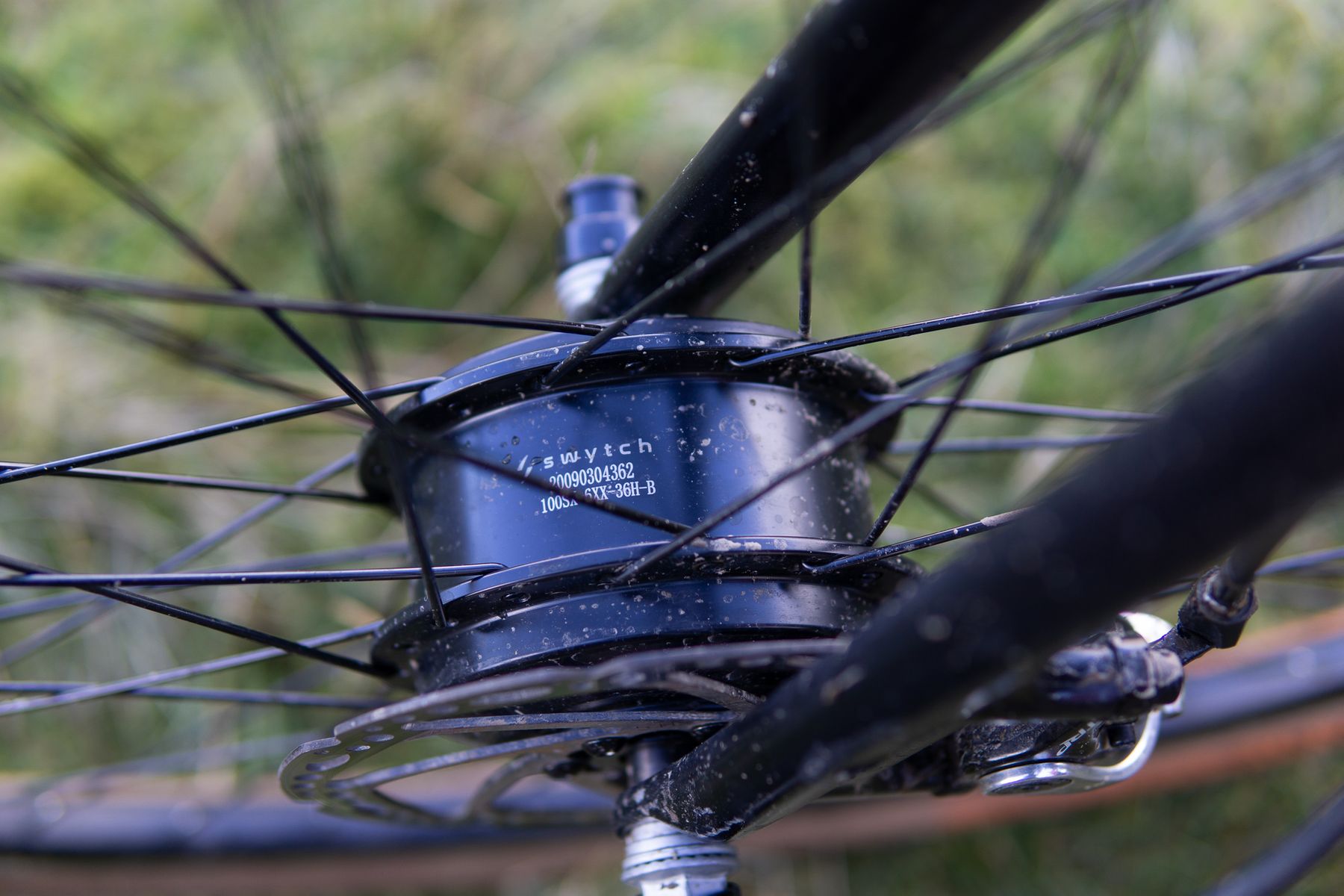
Installation
The first challenge we had with the Swytch was finding a suitable bike to fit one to. The kit is available in a variety of configurations, but as yet they don’t do a thru-axle version, or one with Boost hub spacing. If you’re planning to fit it to a newer bike, that narrows your options down considerably to say the least. We opted to electrify a couple of older gravel/CX bikes, although even for this type of bike, bolt-through front hubs are rapidly becoming the norm.

Swytch’s website features a breezy video showing someone doing not much more than swapping wheels and riding off. The reality, as ever, is a little bit more involved. First of all, the kit I received had a 10mm solid axle, a standard hardly ever found on current bikes in Europe and the US. We were told the Swytch kit is available in a 9mm axle variation, but we’ve since been told that it’s something they’re still working on – it’d be easy to get confused. The solution we were recommended was to file down the flat sections of the axle to fit the fork.
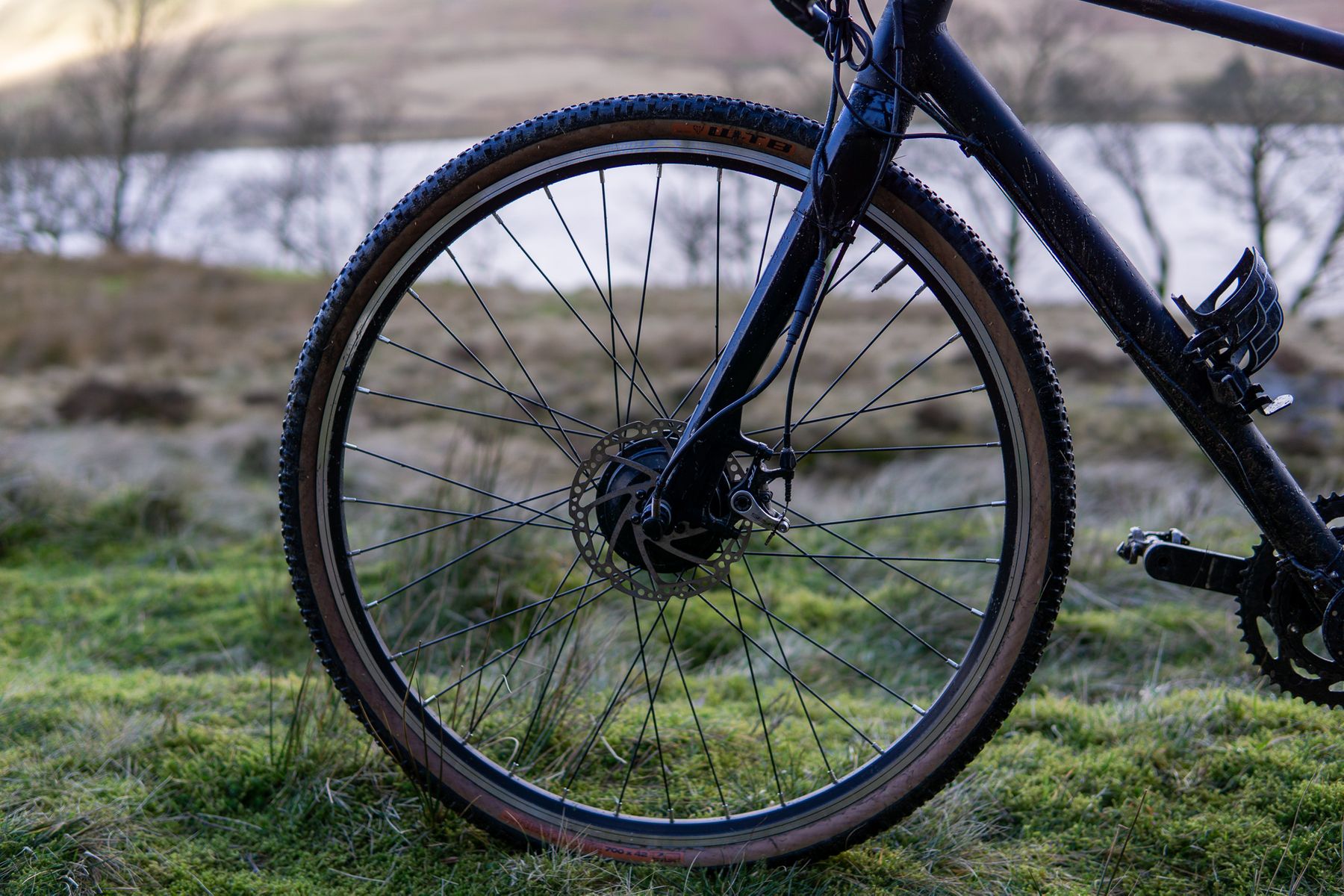
Although the wheel has a braking surface on the rim, it can also be used with a disc brake. The bolts securing the rotor are much shorter than normal so as not to foul the moving parts of the motor, and I’d recommend adding a bit of thread lock to them for extra confidence.
The front wheel is secured by a couple of somewhat agricultural 16mm nuts, meaning you’ll need to pack an appropriate spanner in your tool roll. On one of the kits I was sent, the tabbed washer that holds the wheel in the dropout was the wrong way round, and I had to carefully unthread the whole lot from the power cable to sort this out.
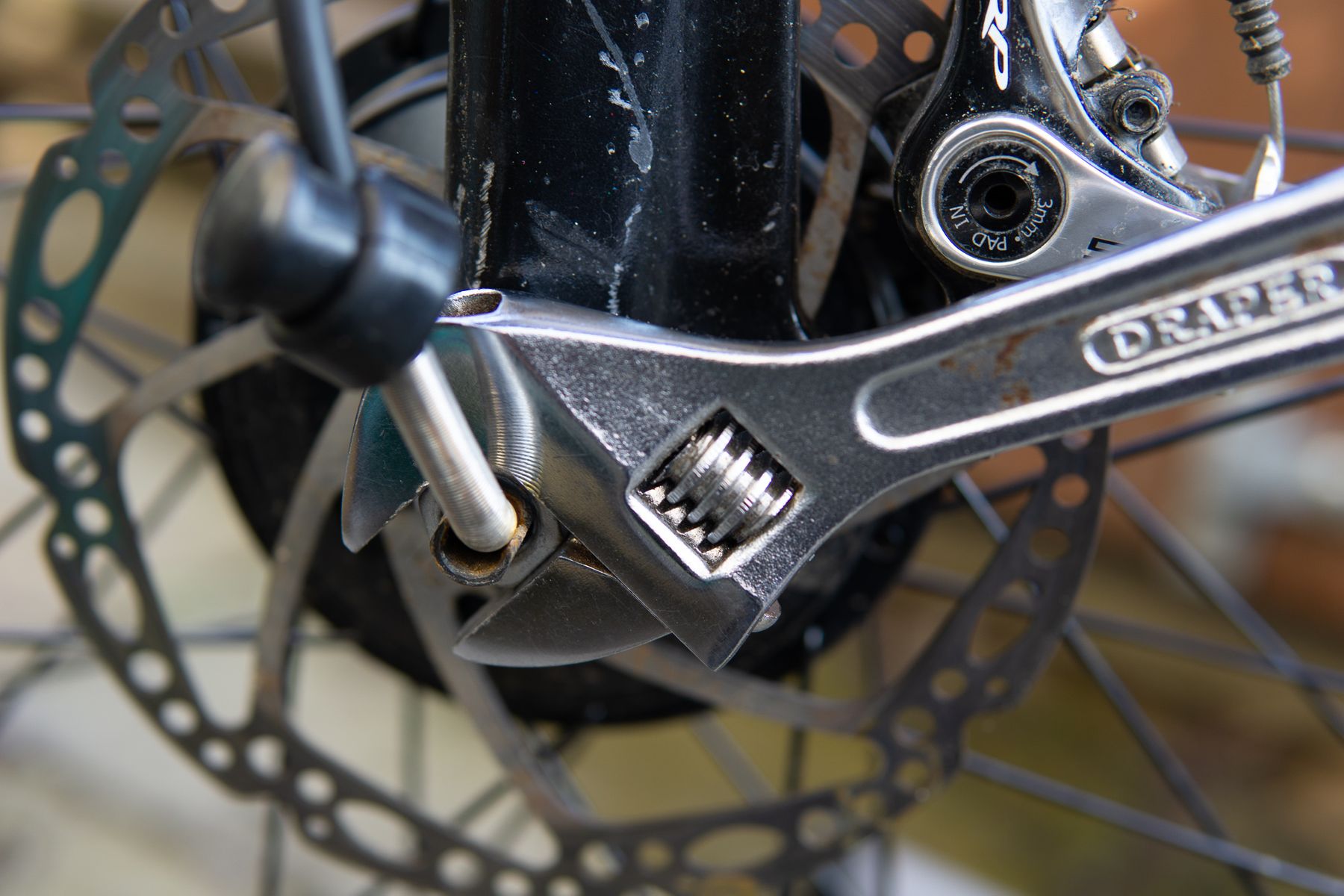
Having done that, I got the rest of the kit fitted. The battery bar bag is really neat and the clamp has a clever little strap that stops it rotating, a feature that all bar bags really ought to have. In order to tell the motor when to activate, you need to fit a sensor near the bike’s bottom bracket, and add a magnetic ring behind the crank arm.
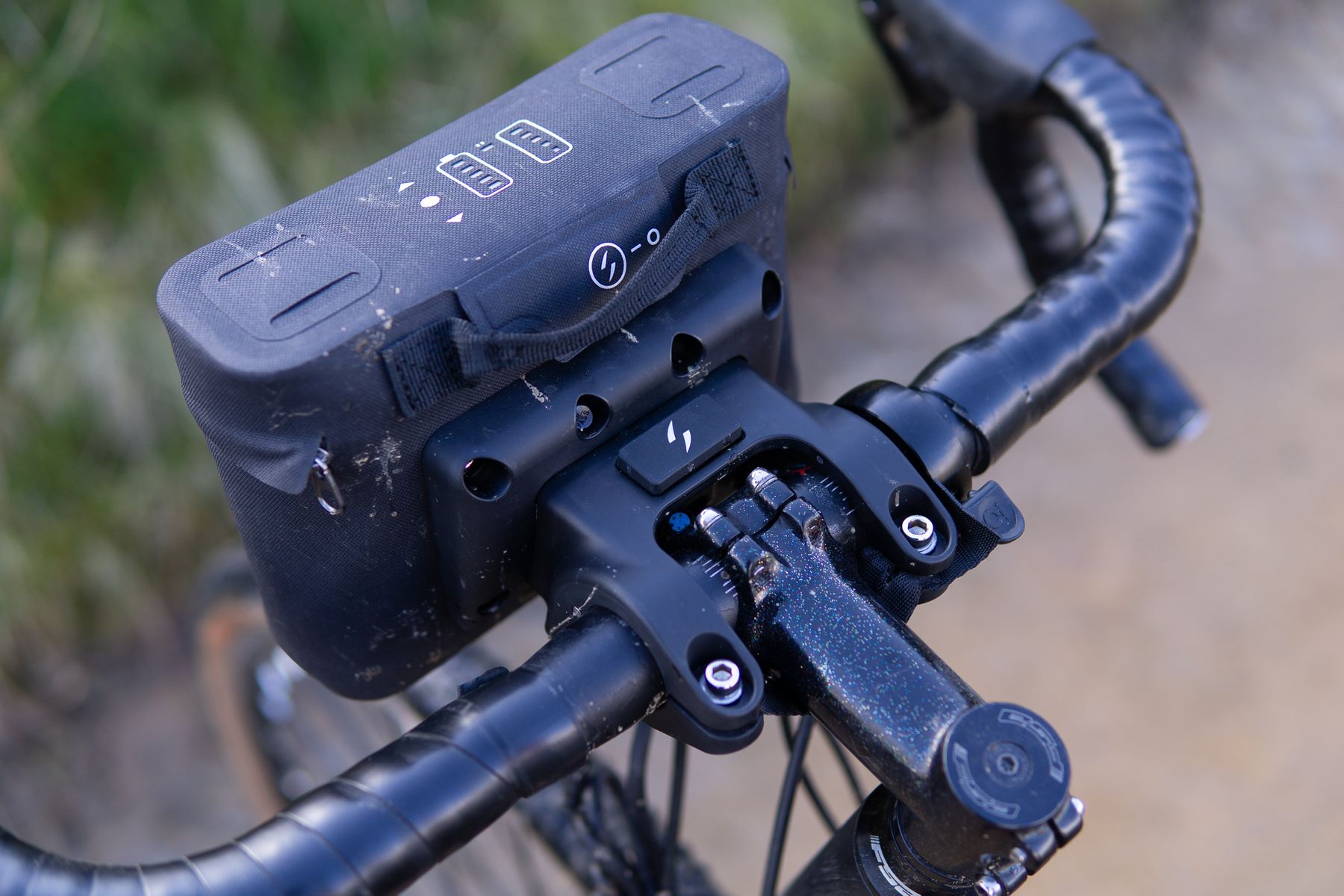
Unfortunately, the kit I was initially sent had a magnetic ring that only worked with square taper cranks. After a chat with Swytch it transpired that they also do a “universal” sensor. This zip ties to your crank arm and lets you convert bikes with modern chainsets. On the second frame I fitted a kit to, there wasn’t much clearance at all, and the ring mount contacted the sensor. Not ideal, but it still seemed to work. I’ve seen other installations where more clearance has been obtained by chopping off the mounting plate of the sensor and zip tying it directly to the frame.
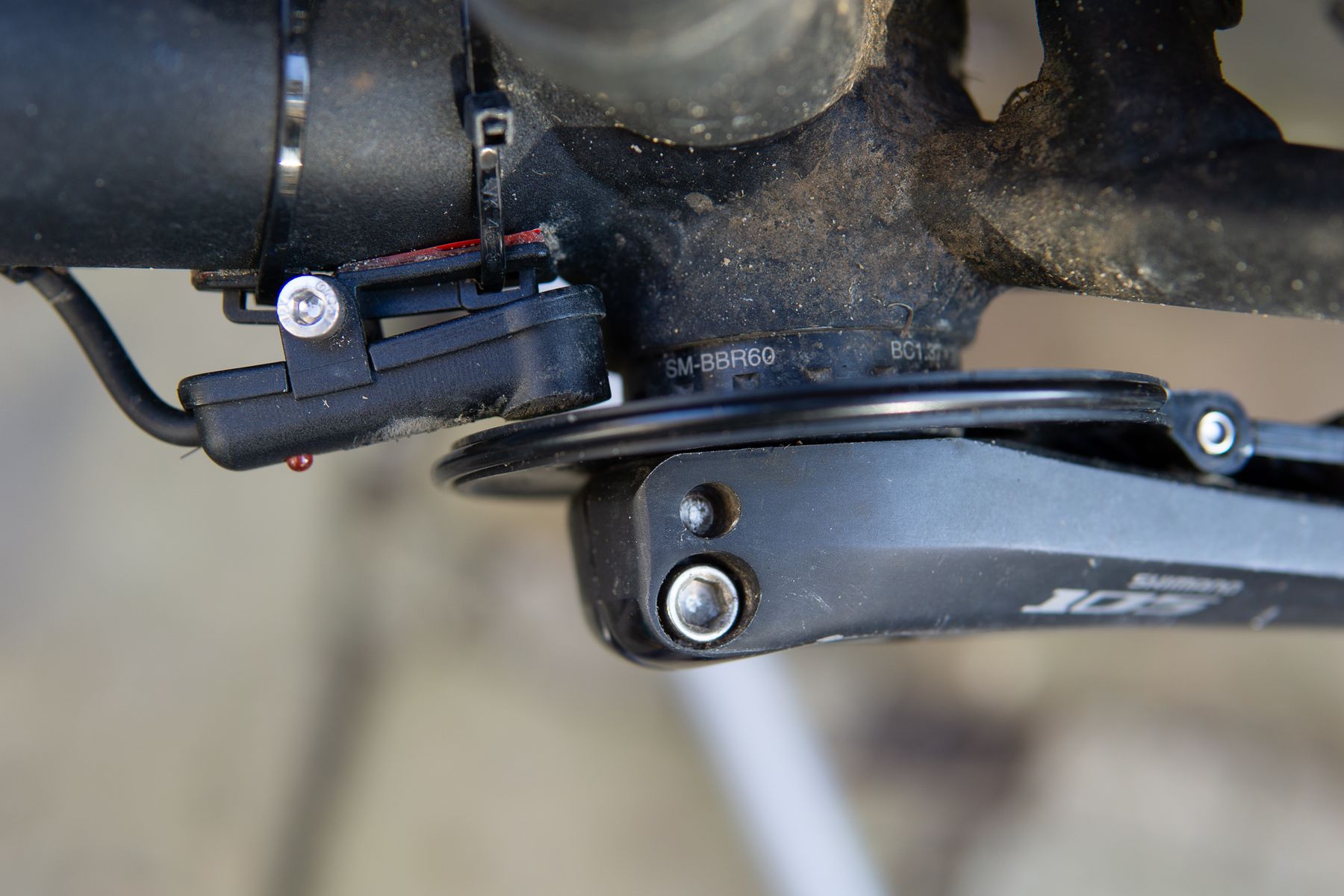
The final job was attempting to tidy up all the cabling between the battery, motor and sensor. There’s a fair amount of extra and no apparent way of shortening it. You also end up with a couple of dangling cables which are surplus to requirements. That said, it’s no worse to look at than most other ebike conversion kits I’ve seen.

A more neatly executed bit of the kit is the integrated battery and the controller, which sits just inside the lid of the bar bag. The controller is incredibly simple, with just two gauges to show battery levels and assist setting. It can be a bit tricky to see what setting you’re on, and changing settings means taking your hand off the bars. A magnetic flap at the back covers the charge port. There’s a semi-secret “walk mode”, accessed by holding the down arrow, which I mainly used to test the kit was connected correctly. The battery bag also has a built-in light, which isn’t bright enough to see by but could be handy if you get caught out by sunset. On a drop bar bike, the battery takes up most of the space available on your bars and you’ll need to get creative if you want to fit a light or a GPS.
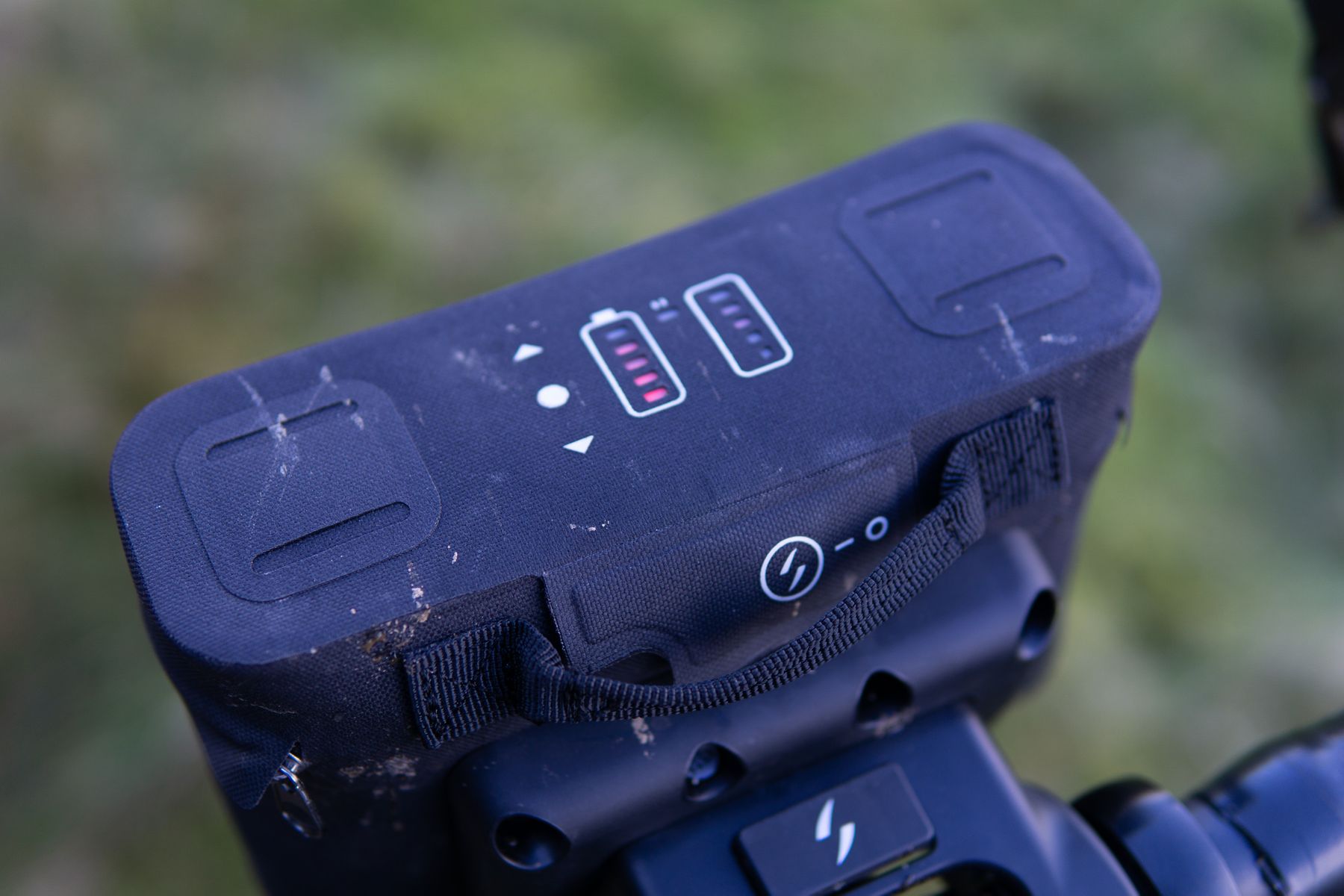
The weight the kit adds is noticeable – front wheel and motor alone are 3 kg. But this is still much lighter than most dedicated ebikes, with the added bonus that the battery is really easy to remove. As someone who has to get bikes up and down a narrow flight of stairs, this gets a nod of approval.
The Ride
The first go on the Swytch was a really pleasant surprise. There’s a bit of a lag before the motor kicks in, but when it does you really feel like you’re getting a boost. It’s not as seamless as a dedicated ebike but it’s comparable to other conversion kits I’ve used – a bit like being pulled along by an exciteable giant spaniel. The motor has a built-in speed limiter, but thanks to the low overall weight of the system, you don’t get the frustrating feeling of reaching 15.5 mph and not being able to go any faster. In a word, it’s fun. Although it’s less powerful than a dedicated assist system, the gap is a lot less than I was expecting from the kit’s diminutive size.

I didn’t find the weight of the kit on the bars affected steering or handling to the point where it became annoying. A bit of extra grunt is required to lift the front wheel over obstacles, similar to riding a bikepacking rig with a bar bag. The battery looks very vulnerable to damage in an over-the-bars incident, but the bikes I fitted it to meant that I wasn’t riding anything too technical.
On steeper climbs, I found the front wheel broke traction easily and a lot of the assistance was lost as it scrabbled around for grip. Climbing out of the saddle and maintaining a higher speed seemed to help, but it was still easily the Swytch’s least endearing trait.

Battery life, as you’d expect from its size, wasn’t stellar. I got around 20 miles and over 2,500 feet of climbing on a charge, but an all day ride would involve some careful rationing of the power. Recharge time is fast though – Swytch claim three hours from empty to full.
Durability Notes
The first kit we were sent arrived in the depths of winter, and after a few wet rides things started to go awry. The motor would cut out while pedalling and eventually stopped working altogether. We contacted Swytch, who helped narrow down the issue to the pedal sensor, which had expired prematurely thanks to water ingress. Apparently some older batches of sensors are less well sealed than the current ones sent out with a kit. After fitting a new sensor, the kit worked fine again, although the weather hasn’t been quite as soggy as those first few weeks.

Three Things We Loved
- It’s a neat little system that gives a decent amount of assistance.
- UK support and warranty is very welcome.
- The light weight and removable battery make it an option for anyone with bike storage or security concerns.
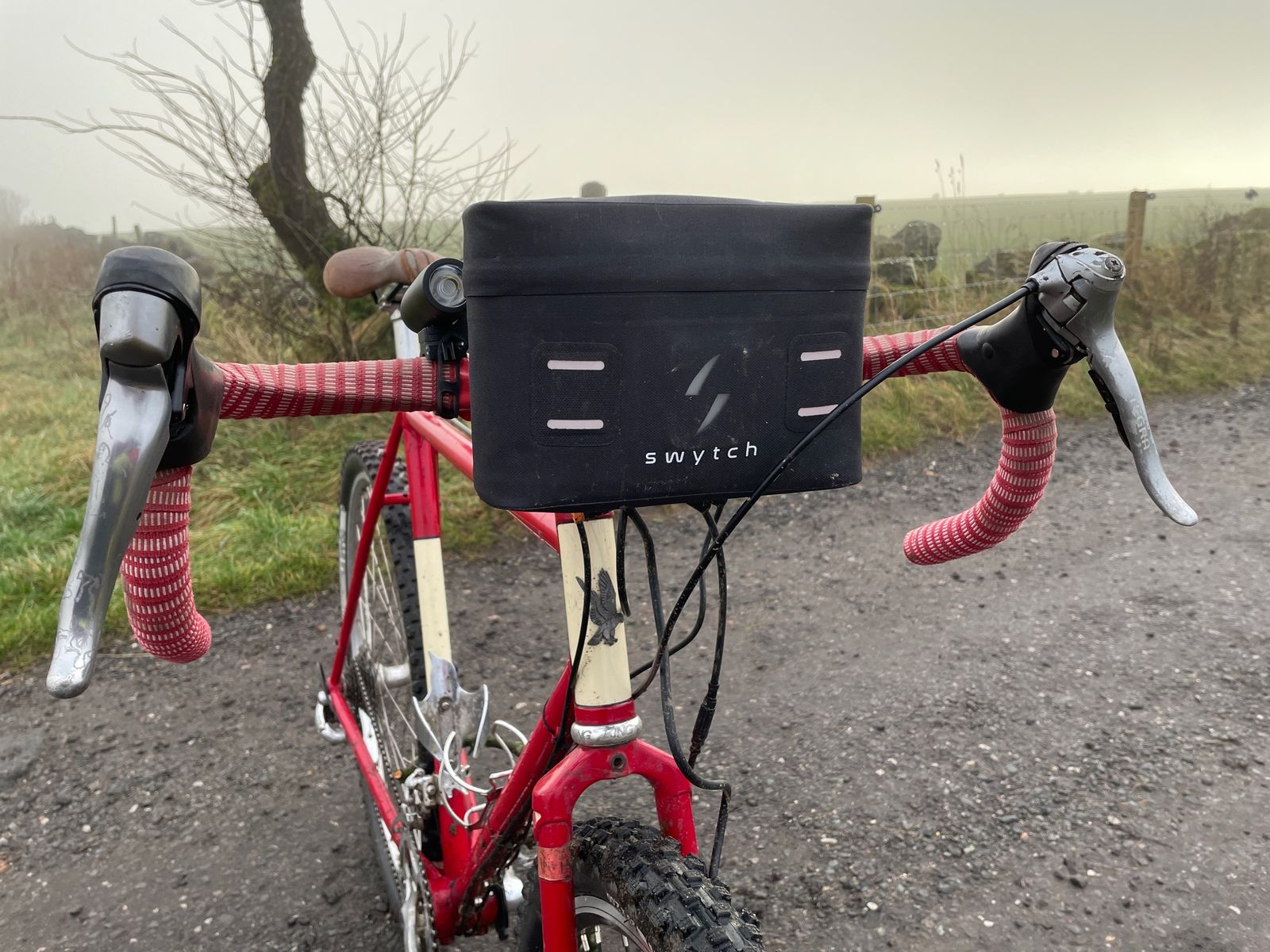
Three Things We’d Change
- Despite the range of options, it isn’t compatible with many current bikes.
- Front wheel drive systems don’t work well on steep lumpy terrain.
- The bar mounted battery-in-a-bag is too vulnerable to knocks and crashes.
Overall
It might look like something from the Innovations catalogue, but the Swytch kit gives a really usable amount of power and assistance. It’s a fun entry point into the world of electrified cycling for short commutes and leisure rides.

For proper off road riding though, the Swytch kit has some issues that are difficult to overlook. These include its lack of compatibility with modern wheel standards, the annoying lack of traction on anything steep or rough, and the fact that you’re carrying the most expensive and fragile bit of the system in a soft bag on your bars. Add in questions over battery life and reliability, and this isn’t a great substitute for a dedicated ebike, although at least the kit is light enough to ride with unpowered.
While the current version of the kit is definitely more suited to riding to the office, an off-road version of the Swytch, with a rear wheel motor and hard case battery that mounted to the frame, could be a really interesting proposition. We all know someone who doesn’t get out on the trails as much as they used to, but doesn’t want to chop in their perfectly serviceable bike, and it’d be great if someone made an ebike kit that was tailored to them.

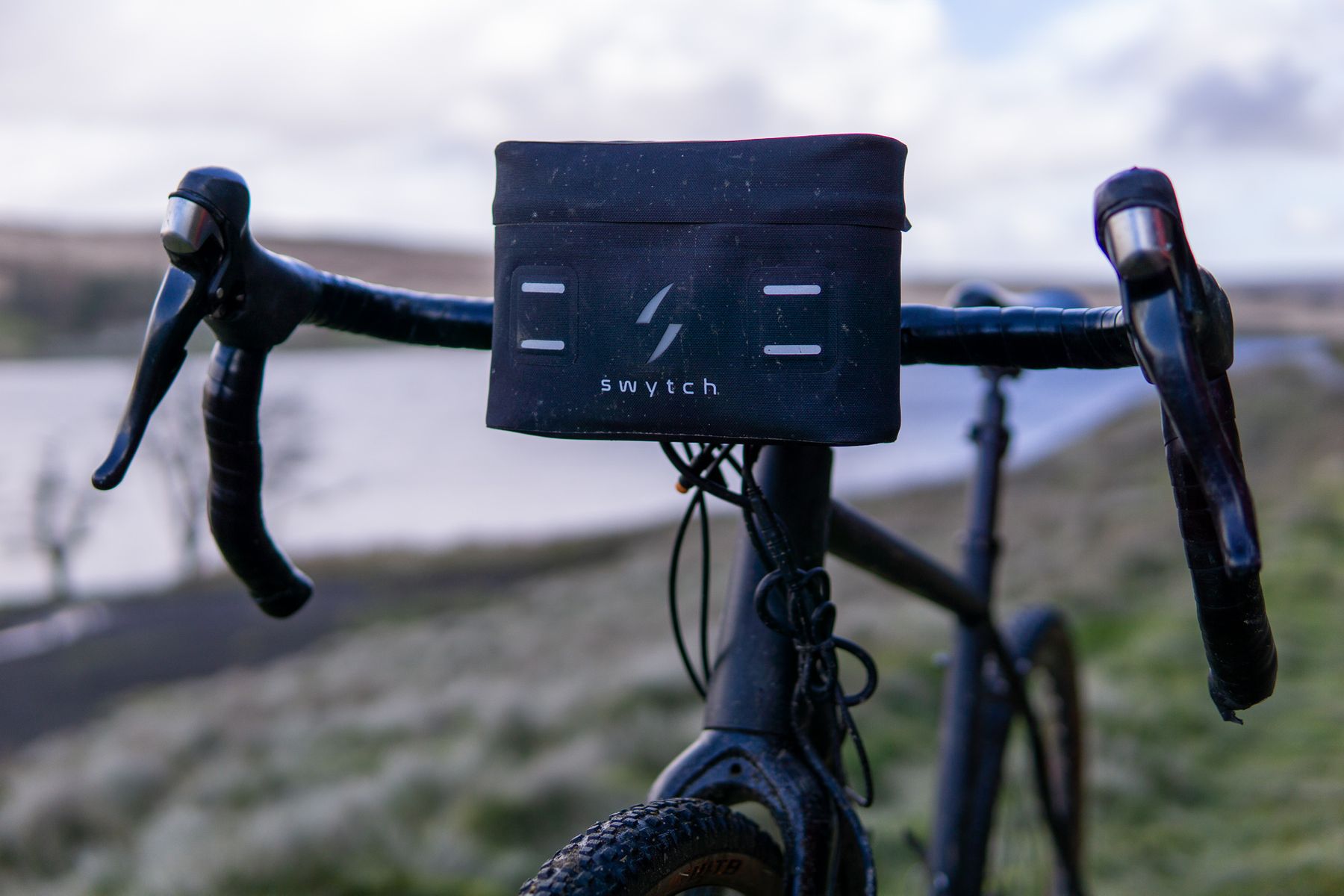




Interesting review. On the face if it it looks like a great idea. But seems let down a bit by the execution. Design seems to be for the cheaper end of the bike market (hence square taper), but for not much more than they’re charging you can buy a ready made e-bike (albeit very heavy and probably virtually useless without the motor). Seems like they need to think through the proposition, ans better understand the multitude of different standards out there, if they’re going to have something that more dedicated riders would be comfortable investing in. After all, the multiple bike owners are probably the ones who would be most comfortable spending that kind of money..
It does sound very much like a box of bits from China (the old school fitment issues echoed every cheap kit I looked at), albeit with a fairly well designed battery bag, controller and mount.
As a comparison, my tsdz2 kit with a 650w battery was less than the pro Swytch kit and is a torque sensing mid drive, rather than a FWD cadence unit
You will also need to factor in VAT and delivery cost so add about £140, and wait a long time for the manufacture and delivery i ordered mine in May and got delivered in Dec. I fitted the system to my Brompton which works well but i wouldn’t fit it to my MTB.
Weird – the website gives no info on price at all except that you can sign up for “50% off”. Also they’re based in London but their ‘accessories’ includes two forms of throttle for ‘on demand’ power assist. Which is illegal to use in the UK.
altaf, I’ve had a clarification from Swytch on the pricing and apparently it’s now payable in all one go rather than adding VAT later.
b33k34, I can’t speak for Swytch, but I’ve used some ebikes where a separate throttle is used to activate walk mode, rather than giving you full power. Legally it’s a bit of a grey area but it’s potentially very useful, e.g. if you were lacking the leg strength for steeper hill starts. They also sell to a lot of markets around the world.
The problem is it’s not illegal to sell an E-bike with a switch. It certainly isn’t illegal to sell switches. It’s just that you can’t then legally ride the bike on a public highway
Pointless faff by the look of it♂️